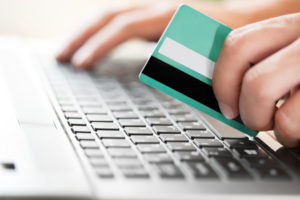This article describes the ways the pandemic impacted consumer spending habits. It is backed by a few weeks research finding and organizing publication from reputable sources like Mc Kinsey and government provided information such as Census data.
The Gist (“Too Long Didn’t Read” version of the article)
During the pandemic there were those who could save and those who struggled to make ends meet. Many are even increasing their debt. In any situation, sounding financial principles like an emergency fund of 6 months of expenses are always helpful.
People saved more thanks to less buying temptations in the real world. While online interactions soared, so did online shopping. And as more people are vaccinated and the situation goes progressively back to normal, many desire to spend what they couldn’t do in 2020.
The European Journal of Social Psychology found that on average, a behavior becomes automatic after 66 days and the range of time is from 18 to 254 days. So, it is highly possible that many habits established during a pandemic will endure.
Here below the detailed findings.
Forced to Spend Less
On April 29, 2021, The New York Times reported that US. households amassed $4.1 trillion in savings up from $1.2 trillion before the pandemic began. And Forbes reported in May that on an April 2021 Bank of America Preferred Insights survey, 77% of baby boomers said they have saved money usually spent on dining, entertainment and travel.
This shows essentialism has been reinforced. People are still focusing on necessities like groceries and health care. So, avoiding unnecessary spending like the $30 to $50 per day on breakfast, coffee and other unnecessary expenses while instead cooking at home. That conducted to 32% of people gaining weight during the pandemic according to WXYZ-TV Detroit.
Products people stopped buying
Subscriptions: because people staying at home realized they did not watch TV cable or even did not receive phone calls at wired fixed phone
Cosmetics: L’Oréal estimated that globally, the beauty market had fallen 13-14% in the first half of 2020 as reported by J.P. Morgan. Also, J.P. Research estimates that sun care for a big company like Beiersdorf was -6% compared to 2019.
Holidays: As of October 2020, only 19% of Americans were expecting an economic rebound for the U.S.. Coherently, 42% of American consumers planned less expenses in 2020. Only in China consumers were spending more than in 2019. And 30 to 60% of consumers across countries plan to use online platforms for holiday shopping (See chapter Increased Online Shopping).
Savings increased
As initially mentioned, people were able to save more because they spent less. They are surprised about how easy it was to save more just because they were less exposed to spending on outings. That is also reflected by the savings rate change. This rate shows total personal savings minus disposable income. And as of March 2021, it increased to 27.6%. All that led to a slowdown in consumer spending. The last big increase was in April 2020, when savings as a percentage of disposable income hit 33%. Then it eased to over 12% but before the pandemic it was generally below 10%. It has gone back to 9.4% in June 2021.
Nevertheless, only 33% of people surveyed by T. Rowe Price affirm their finances improved thanks to less spending. Saving is a fortune not a chance everyone had as NASDAQ reports in April 2021.
Less money to spend
A survey conducted in April 2021 showed 50% of Americans don’t have $250 left over each month after usual spending in necessities and regular spending; while 12% have nothing at all. Debt has increased during the pandemic for 29% and 53% of Americans feel they were financially impacted by the pandemic according to a Charles Schwab survey in 2021.
Focus on value and essentials to buy
One way consumers focus on value and reduce spending is buying directly from manufacturers. Nielsen IQ shows in 2021 that 80% of shoppers do that and 71% are ready to pay more if they get better quality products and believe those better products would meet their needs better.
Other ways are convenience- and purposive-buying like the desire to support local businesses. Also, being socially responsible like buying recycled packaging or eco-friendly products. 3 in 10 consumers say they are willing to buy such sustainable products as reported by Nextdoor Engagement Insight Series in April 2021.
In the search for value, loyalty was affected. Consumers were attracted by cheaper shipping, larger package size, lower prices or promotions. In October 2020, McKinsey reported consumers were ready to incorporate those habits in the future.
Homebody economy
McKinsey reported in October 2020 that about a third of Americans remain in usual out of home activities but 80% are concerned when leaving home. While in China more than 80% continue with regular out-of-home activities in contrast with other countries with stricter measures like Mexico and Japan. Worldwide, consumers cut back on discretionary expenses but celebrations keep motivating people to spend like in India, where consumers prepare for wedding season from October to December.
Some Desire to Spend More
Charles Schwab has published its 2021 Modern Wealth Survey that 24% of Americans want to make up for lost time, and 21% plan to dine out in fancy restaurants. Slick Deals even showed in July 2021 that Americans are spending on average $276 per month on impulsive buying. What accounts for an increase of 51% compared to April 2020.
Most bought products during pandemic
Personal care, food and beverages because people stayed more at home, as mentioned by Celine Pannuti, Head of European Staples and Beverages Research at J.P. Morgan. That was shown by a double digit growth in an industry rarely impacted by such big moves .
Germ prevention related products were the most requested during pandemic. Dettol and Lysol saw their US sales of cleaning wipes double in 2020’s first quarter compared to 2019 and up 60% in the second quarter. Aerosol disinfectant sales also doubled in 2020 while general kitchen cleaners increased by 40%. Also, hand soap climbed 60% in the first half of 2020 as reflected by Henkel sales (parent company of brands Persil and Schwarzkopf.
Supplements and vitamins sales climbed 50% in the first half of 2020 and hair color products from companies like L’Oréal were up over 30% in the second quarter. Also coffee sold by Nestle in Europe and Starbucks in the U.S. saw double-digit growth rates.
Return to spending habits in Q2 2021
In August 2021, McKinsey affirmed US consumers started spending at increasing rates. And in another article, they found that 86% of vaccinated people expect their finances will return to normal by the end of 2021 while 34% affirmed they were already at their normal situation. Even more, the National Retail Federation (NRF) predicts retail spending will reach $4.3 trillion in 2021 thanks to broader vaccination and beating the $4 trillion level in 2020 and $3.8 trillion one in 2019.
Increased Online Shopping
Undoubtedly, online shopping related businesses were those benefiting the most from pandemic. J.P. Morgan affirms that based on the U.S. Census Bureau, American consumers spent 31.8% more in the second quarter of 2020. E-commerce increased from 11.8% in 2020’s first quarter to 16.1% in the second one.
This trend is validated by many companies such as Dettol and Lysol, whose e-commerce increased to 12 % of total sales and 60% across all channels in the first half of 2020. For Nestlé, the increase accounted for 49% in the same period. So, online sales were from representing 8.5% of total sales in 2019 to 12.4% in 2020. And for L’Oréal online sales surged to 65% during the same first half. For May their sales were going up by 75% and 82% for June 2020.
In the UK, Roundatble showed in August 2021 that consumer electronics online sales went from 55% in 2019 to 73% in 2020 (offline ones decreasing from 45% in 2019 to 27% in 2020). The same trend was seen in fashion sales, where online share of global sales went from 41% in 2019 to 87% in 2020.
Online and mobile payment platforms like PayPal and Venmo benefit hugely from pandemic. As 43% of Americans are using them since the beginning of the pandemic as of April 2021. This is sometimes combined with curbside pick-up. In March 2021, a Nextdoor Member poll showed 69% of people using curbside pick-up plan to keep using it once the pandemic is over, while food delivery increased to 56% of people using delivery apps.
The next-normal consumer defined by McKinsey in April 2020 is closely related to online consumption. People spend more time creating their own entertainment at home; 45% of consumers were using online streaming to stay at home. Such online omnipresence is blurring the lines between work, lifestyle and social interaction between mobility, health and finance according to Swiss Re Institute.
Many in 2020 decided to buy a home online. As people spend more and more time at home, many decide to acquire a different dwelling, as shown by the Census data, it highly grew in 2020 but is getting back in 2021 to before pandemic levels of around 670,000 houses sold per month. From 97% 2020 to 43% in 2021, potential home buyers used the internet to find the real estate to buy (an all time high in 2020) according to the National Association of Realtors. Such an increase in home buying and searching online was enhanced by the many innovations. Those include 3D walk-throughs through the residence, videos of the property, drone shots, virtual guided visits with an agent showing every inch of the property and even driving in the neighborhood, showing rooms with and without furnishings and development of optimized images for social media. In addition, many financial aspects related to home buying are already digitized. For instance, people can apply for mortgages through sites like Rocket Mortgage and Quicken Loans, bank transfer apps with Venmo and Zellle and sign contracts through DocuSign.
Online car buying
Almost 30% of car deals in 2020 were started online according to Haig Partners and reported by ABC News, in contrast with 2% in 2019. Negotiating prices, tuning up the car deal and applying for financing and most of the paperwork can be done online And the car can even be delivered to the buyer’s home. A Cox survey shows that 64% of consumers want to do their buying online and 76% want a fully online car buying experience. That leads Cox to predict that for 2025, 4 out of 10 car buyers will buy entirely online.
Are Brick and Mortar stores losing market share due to e-commerce?
In January 2021, a Raydiant’s report showed that only 46% of respondents prefer in person buying instead of online one. A decrease of 9% compared to 2020. To prevent such a trend continuing, companies with in-stores are investing more capital in multi-channeling during the next 5 years including convenience alternatives like curbside pick-up.
Buy now, pay later (BNPL)
Companies such as Affirm, Afterpay and Klarma offer customers the possibility to pay for their purchases without paying upfront. As Ascent, the research branch of the Motley Fool reports, 55.8% of customers have used such BNPL service in 2020, increasing almost 50% compared to 2019. And Bank of America estimates BNPL transactions could reach $1 trillion by 2025.
In April 2021, the Strawhecker Group found that 79% of consumers would use BNPL more often as more merchants offered it and 83% would like more merchants to do that.
- Savvy financial habits remain valid
Lifelong financial principles like spending less than you earn and building an emergency fund of 6 months of expenses remain valid, even more during the pandemic. If you have benefited from mortgage forbearance, rent relief, student loan relief, eviction moratoriums or any other help during a pandemic carefully check when such benefits might end and start preparing yourself. Maybe a career change or any other way to make money online can help your financial well being.
The advice from Patty McCord is also relevant, as she worked for 14 years as Netflix’s chief talent officer and helped the company evolve from a DVD subscription business in the U.S. to a global one with more than 200 million subscribers. For her:
- Pandemic is a good example of how we had to learn to do new things just because we had to. People realize they CAN do many things.
- All people are working and are grown-ups. It means people are responsible enough to work and manage their time.
- Now people pay attention to results instead of monitoring whether people are busy at work.
- There is nostalgia about how things were before the pandemic. We are discovering new things now. Let’s not lose innovation. Why if we don’t go back but go forward?
This is a guest post by author Alcides Otiniano. Frugality and prosperity are not opposites but complementary. We all can be frugal and prosper. That’s why the author has created the Prosperous Frugal site. There you will find related articles such as How to use financial planning to create your plan.



